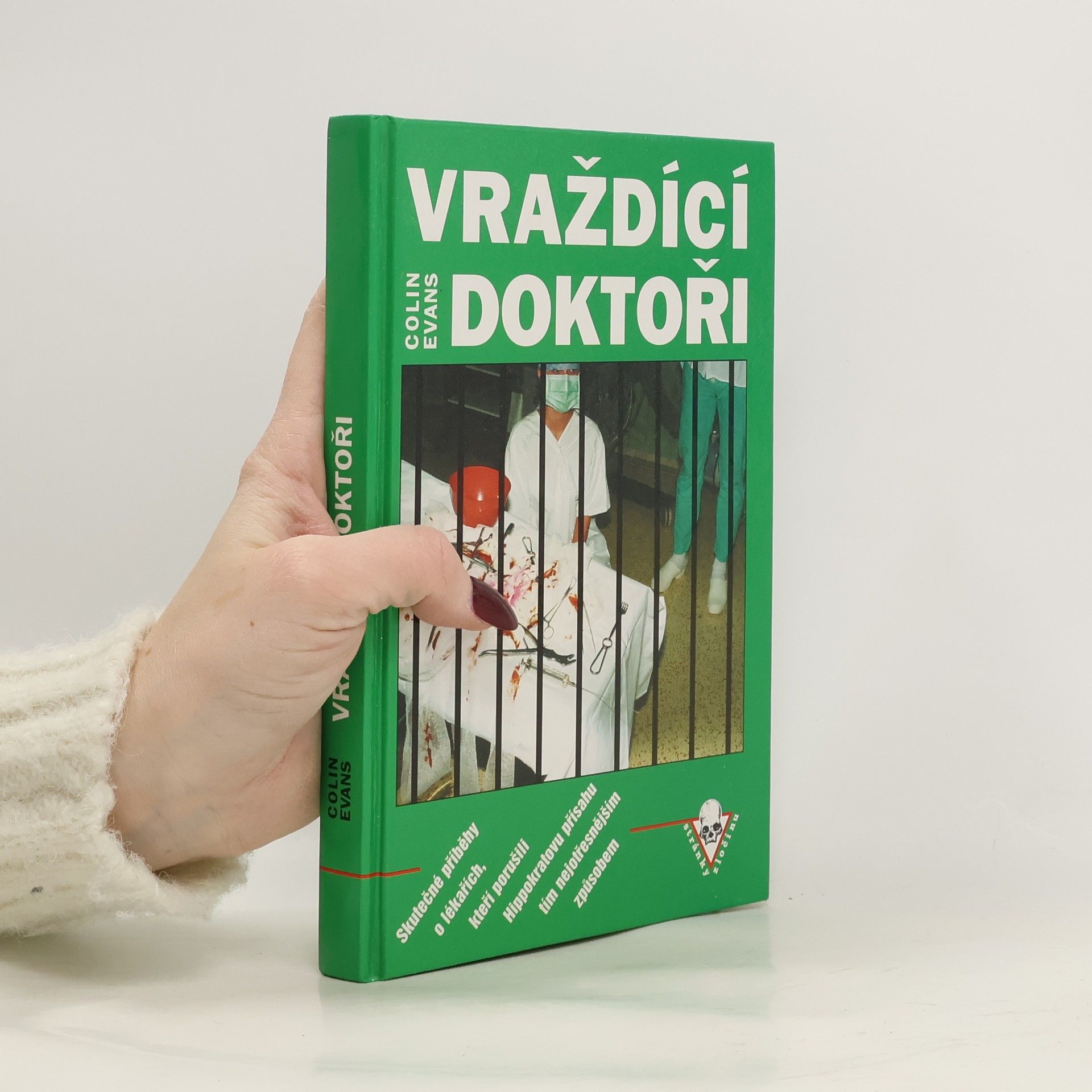Vraždící doktoři
- 234 stránok
- 9 hodin čítania
13 kriminálních příběhů s podtitulem Skutečné příběhy o lékařích, kteří porušili Hippokratovu přísahu tím nejotřesnějším způsobem.
Colin Evans sa dlhodobo venuje forenznej vede a skutočným kriminálnym prípadom, čo dokazuje jeho rozsiahla tvorba. Jeho záujem o temnejšie stránky ľudskej povahy sa datuje od mladosti, keď trávil hodiny v knižniciach a študoval dobové novinové správy o sériovom vrahovi z Whitechapelu. Evans sa etabloval ako popredný autor v oblasti histórie a vývoja forenzných vied, pričom jeho práce sa vyznačujú hlbokým ponorom do detailov a psychológie zločinu. Jeho analýzy ponúkajú čitateľom fascinujúci pohľad na spôsob, akým sa forenzné metódy vyvíjali a ako prispievajú k odhaľovaniu pravdy.






13 kriminálních příběhů s podtitulem Skutečné příběhy o lékařích, kteří porušili Hippokratovu přísahu tím nejotřesnějším způsobem.
A Question of Evidence explores fifteen infamous forensic cases, including the Turin Shroud, Napoleon's death, and the O.J. Simpson trial. Colin Evans examines conflicting medical and scientific evidence, revealing how it influenced verdicts. The book highlights the complexities of forensic science in unresolved cases.
The most popular schools song and hymn book ever! Combines Come and Praise 1 and 2, giving you the words and music for 149 traditional and contemporary hymns and songs in one volume.
The Groundbreaking Cases of Sir Bernard Spilsbury, and the Beginnings of Modern CSI
Before there was CSI , there was one man who saw beyond the crime-and into the future of forensic science.His name was Bernard Spilsbury-and, through his use of cutting-edge science, he single-handedly brought criminal investigations into the modern age. Starting out as a young, charismatic physician in early twentieth-century Britain, Spilsbury hit the English justice system-and the front pages-like a cannonball, garnering a reputation as a real-life Sherlock Holmes. He uncovered evidence others missed, stood above his peers in the field of crime reconstruction, exposed discrepancies between witness testimony and factual evidence, and most importantly, convicted dozens of murderers with hard-nosed, scientific proof.This is the fascinating story of the life and work of Bernard Spilsbury, history's greatest medical detective-and of the cases that not only made him a celebrity, but also inspired the astonishing science of criminal investigation in our own time.
The Greatest Cases of New York City's Office of the Chief Medical Examiner
Exploring nearly a century of history, the narrative delves into the significant events faced by New York City's Office of the Chief Medical Examiner, from political turmoil and horrific crimes to the aftermath of 9/11. The OCME serves as the ultimate authority on sudden and violent deaths, navigating a landscape filled with challenges and power struggles, highlighting its resilience and critical role in the city's justice system.
Set against the backdrop of 1920s fame, the narrative explores the tumultuous life of Rudolph Valentino, revealing his connection to a scandalous murder trial involving Blanca Errázuriz and her estranged husband, Jack de Saulles. As their marriage deteriorates amid infidelity and societal pressures, Blanca's desperation leads to a shocking act of violence. The ensuing trial captivates the public, while Valentino, entangled in the drama, seeks to escape the fallout by reinventing himself in Hollywood. This tale intertwines love, betrayal, and ambition in a gripping historical context.
Colin Evans, former cricket writer for the Manchester Evening News, looks back at Farokh Engineer's career, recalling many magical moments with Lancashire and India though the 1960s and 1970s.
Dziesięć zażartych osobistych konfliktów między władcami,przywódcami i politykamiSpory między potężnymi i słynnymi ludźmi są nieodłączną częściąhistorii. Wywołują je różnice polityczne i ideologiczne. Lecz o wielebardziej zaciekłe bywają osobiste nienawiści.Ta książka przedstawia ogólne tło i pikantne szczegóły brutalnychprywatnych wojen wielkich postaci historii. Wszystkie miały na celuzniszczyć przeciwnika. Większość prowadzono aż do śmierci wroga:ściętego toporem, zabitego w pojedynku, tropionego przez pół światai zamordowanego przez NKWD, zastrzelonego przez snajpera.Królowa Elżbieta I kontra Maria StuartCzas sporu: 1561-1587. Stawka: angielska korona i religia narodowaParlament angielski kontra król Karol ICzas sporu: 1625-1649. Stawka: boskie prawa monarchiiAaron Burr kontra Alexander HamiltonCzas sporu: 1791-1804. Stawka: urząd prezydenta Stanów ZjednoczonychJózef Stalin kontra Lew TrockiCzas sporu: 1907-1940. Stawka: czołowa pozycja w parti i bolszewickiej,spuścizna po Leninie i panowanie w imperium radzieckimRoald Amundsen kontra Robert ScottCzas sporu: 1909-1912. Stawka: sława zdobywcy bieguna południowegoWallis Simpson kontra Królowa MatkaCzas sporu: 1934-1986. Stawka: brytyjska koronaBernard Law Montgomery kontra George PattonCzas sporu: 1942-1945. Stawka: chwała największego alianckiego generałaII wojny światowejLyndon B. Johnson kontra Robert F. KennedyCzas sporu: 1955-1968. Stawka: Biały DomJ. Edgar Hoover kontra Martin Luther KingCzas sporu: 1961-1968. Stawka: prawa obywatelskie w Ameryceoraz:Józef Piłsudski kontra Roman Dmowski: słynny spór widzianyoczami wybitnego polskiego historyka, profesora Romana Wapińskiego.Czas sporu: 1904-1935. Stawka: czołowa pozycja na polskiej sceniepolitycznej